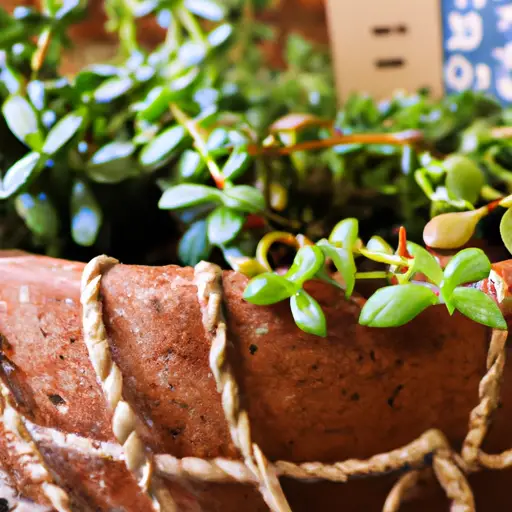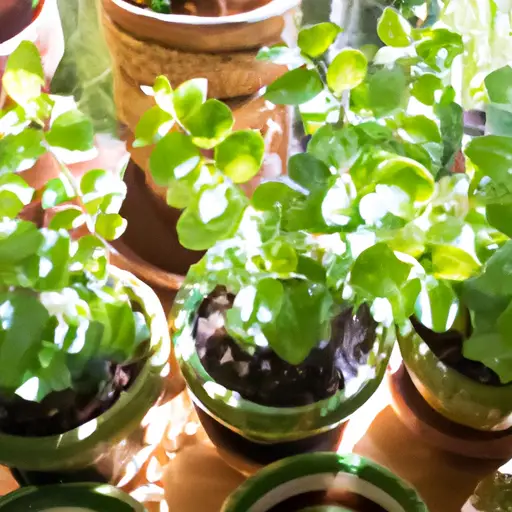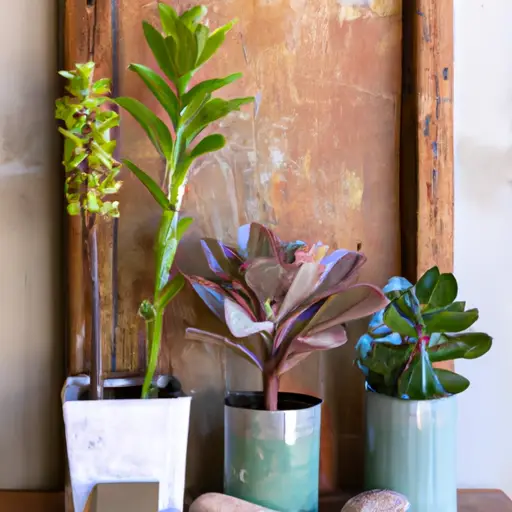Thriving Indoors: Creating an Indoor Oasis with Container Gardening
In today’s fast-paced world, it’s becoming increasingly important to have spaces where we can relax, unwind, and connect with nature. However, with the limited outdoor space in urban areas and unpredictable weather conditions, creating an indoor oasis has become a popular alternative. One way to achieve this is through container gardening – a practice that allows you to bring the beauty of nature indoors while showcasing your creativity.
Container gardening involves planting and growing plants in containers instead of directly in the ground. This method offers several advantages, including flexibility in terms of space utilization, ease of maintenance, and the ability to control growing conditions. Whether you’re a seasoned gardener or a beginner with a green thumb just waiting to bloom, container gardening can transform any indoor space into a thriving oasis.
Choosing the Right Containers
The first step in creating your indoor oasis is selecting the right containers. There are numerous options available in various materials, sizes, shapes, and colors – allowing you to choose based on personal taste and the plants you intend to grow. Clay or terracotta pots are popular choices due to their porous nature, which allows for good airflow and water drainage. Plastic containers are lightweight and less prone to breakage while retaining moisture well. Wood containers provide a rustic touch but require regular sealing to prevent water damage.
While aesthetics play an essential role in container selection, functionality is equally important. Ensure that your chosen containers have adequate drainage holes at the bottom to prevent waterlogging. Additionally, consider the size of your plants when selecting containers – providing ample space for root development is crucial for healthy growth.
Selecting Suitable Plants
Once you’ve chosen your containers, it’s time to select the right plants for your indoor oasis. The possibilities are endless! Consider factors such as lighting conditions (direct sunlight or shade), temperature tolerance (heat or cold), and humidity requirements when choosing plants for each specific space in your home. Some popular choices for container gardening indoors include:
1. Succulents: These desert-dwelling plants require minimal watering and thrive in bright, indirect sunlight.

2. Herbs: Grow fresh herbs like basil, mint, or rosemary in your kitchen. They not only add a touch of greenery but also provide fresh flavors to your culinary creations.
3. Tropical plants: Add a touch of the exotic with plants like orchids, ferns, or peace lilies that thrive in humid environments.
4. Flowers: Brighten up any space with colorful blooms such as geraniums, pansies, or petunias.
5. Vegetables and fruits: Grow small varieties of tomatoes, peppers, or strawberries on sunny windowsills for a taste of homegrown produce.
Creating an Ideal Growing Environment
Proper care and maintenance play a significant role in the success of your indoor oasis. To create an ideal growing environment for your plants:
1. Lighting: Most indoor plants require bright but indirect sunlight to thrive. Place your containers near windows or invest in grow lights to provide adequate light for photosynthesis.
2. Watering: Avoid overwatering as it can lead to root rot and other plant diseases. Ensure that the soil is slightly moist but never sodden before watering again.
3. Humidity and Temperature: Monitor the humidity levels in your indoor oasis – some plants may require misting to maintain adequate humidity levels during dry seasons. Additionally, ensure that the temperature remains within the optimal range specified for each plant species.

4. Fertilizing: Supply nutrients to your plants regularly by using organic fertilizers specifically formulated for indoor container gardening.
Maintaining Your Indoor Oasis
Regular maintenance is essential to ensure the longevity and vibrancy of your indoor garden:
1. Pruning and Trimming: Regularly trim dead leaves and prune overgrown stems to promote healthy growth and prevent diseases from spreading.
2. Pests and Diseases: Keep an eye out for common indoor garden pests like spider mites or aphids. Promptly address any signs of infestation with organic pest control methods such as neem oil or insecticidal soap.
3. Rotating Plants: To ensure uniform growth and prevent plants from leaning towards the light source, rotate them periodically to provide equal exposure on all sides.
4. Replenishing and Replanting: Replace soil or repot plants when necessary to provide fresh nutrients and adequate space for root development.
Container gardening allows you to create an ever-evolving indoor oasis that reflects your personal style and provides a sanctuary within the confines of your home. With careful planning, proper maintenance, and a dash of creativity, you can transform any space into a lush, thriving haven that nurtures not only your plants but also your well-being. So, roll up your sleeves, grab some containers, and let your imagination run wild – the possibilities are endless!













